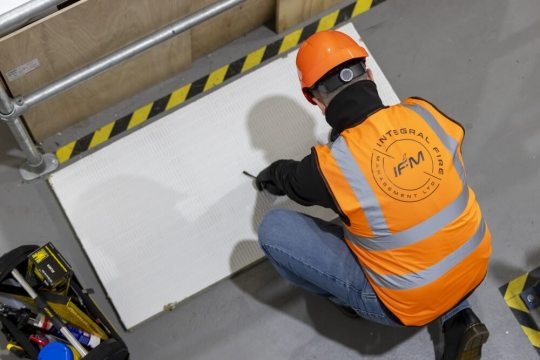Text
How To Identify a Faulty Fire Alarm: A Comprehensive Guide

Ensuring the effectiveness of your fire alarm system is essential to ensure the safety of the occupants during a fire emergency. A faulty fire alarm can lead to delayed or vague response during a critical situation, posing heavy risks to residents and responders.
In the UK, fire alarm regulations are governed by strict standards outlined in the Regulatory Reform (Fire Safety) Order 2005 and British Standards (BS) guidelines, such as BS 5839 for fire detection and alarm systems. Adhering to these standards ensures legal compliance as well as maximum safety against fire outbreaks.
Therefore, routine fire risk assessment is the best way for early recognition and fixation of potential smoke alarm system issues. This comprehensive guide explores practical methods for assessing its functionality. Additionally, these assessments evaluate the adequateness of fire alarms based on building occupancy, fire hazards, and emergency escape routes.
By familiarising yourself with these practices and regulations, you can proactively protect your property and occupants from the devastating consequences of fire incidents.
How to Check if You Have a Faulty Fire Alarm
Early spotting signs of a faulty fire alarm can prevent life-threatening situations. Here are key indicators to watch for:
Constant False Alarms: If your fire alarm frequently triggers false alarms without apparent cause, it may indicate a malfunction.
Inconsistent Activation: A fire alarm that fails to activate during routine testing or in the presence of smoke or heat is faulty and requires immediate attention.
Visible Damage: Inspect your fire alarm system for physical damage, such as broken components, corroded wiring, or discoloured sensors, which can impair its functionality.
Testing Fire Detectors
Regular testing of fire detectors is essential to ensure their reliability. Follow these steps for effective testing:
Manual Test: Use the test button on your smoke detector to simulate smoke and verify proper activation.
Smoke Test: Conduct periodic smoke tests using approved aerosol sprays to confirm the detectors' responsiveness to smoke.
Heat Test: Utilise heat sources to evaluate the response of heat detectors under different temperature conditions.
Smoke Alarm – Essential Considerations
Ensuring proper placement and maintenance is crucial for optimal performance regarding smoke alarms.
Here are key considerations to keep in mind:
Placement: Install smoke alarms strategically throughout your property to maximise coverage:
- Place smoke alarms in every bedroom, hallway, and level of your home to ensure comprehensive protection.
- For better detection, install smoke detectors on the ceiling or high on walls since smoke rises fast.
Maintenance: Regular maintenance is essential to keep smoke detectors functioning effectively:
- Clean smoke alarms regularly to remove dust, dirt, and debris that can interfere with sensors.
- Clean the exterior and interior of smoke detectors gently with vacuum cleaners or a soft brush.
- Follow the easy monthly smoke alarm test by pressing the test button on the system.
Battery Replacement: Proper battery maintenance is critical for reliable fire alarms:
- Replace batteries yearly or as needed to ensure continuous functionality.
- Use high-quality batteries, and consider long-life lithium batteries for extended durability.
Here are the common mistakes to avoid:
To maintain the effectiveness of your smoke alarms, avoid these common mistakes:
Covering Detectors: Never cover smoke detectors with objects or decorations, as this can obstruct airflow and delay detection:
- Keep smoke alarms clear of curtains, furniture, or other items that could block airflow to the sensor.
Neglecting Maintenance: Ignoring routine maintenance tasks can lead to malfunctioning smoke alarms:
- Regularly check and clean smoke detectors to prevent dust buildup and ensure optimal performance.
- Don't ignore low-battery alerts—replace batteries promptly to maintain continuous functionality.
Following these essential guidelines and avoiding common pitfalls ensures your smoke alarms operate effectively and provide early detection during a fire emergency. Regular maintenance and proper placement of smoke detectors are crucial to safeguarding your home and protecting your loved ones.
Ensure Fire Safety with Reliable Fire Alarm Systems
Identifying and addressing faulty fire alarms is essential for protecting lives and property from fires' devastating effects. Follow the guidelines outlined here to improve the efficacy and reliability of your fire alarm system while meeting fire risk review standards.
Don't wait for a fire emergency to discover faults in your fire alarm—take proactive steps to assess, test, and maintain your fire detection systems regularly. Contact your nearest fire management company for professional fire risk assessment and inspection services in compliance with UK regulations. Together, let's ensure the safety and security of your property with dependable fire alarm solutions.
1 note
·
View note